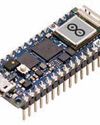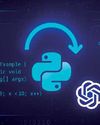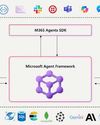Organising Data in the Cloud is No Mean Feat
Open Source For You
|July 2024
Data management is a complex process, made tougher due to the humongous amount of data being generated each day. Databases were developed to make sense of this data but these need to evolve continuously with the increasing demands being made on them. Following a few best practices will also help to manage data well.
-

Databases came into the limelight during the initial growth of application programming. As data grew in volume, a second generation of database architecture evolved called NoSQL databases. These offered strong support in architecting a data warehouse or data lake-based application design.
First-generation database systems (e.g., Oracle, MySQL) have a lot of flexibility in terms of developer access for querying and accessing/interpreting the data as compared to second-generation (NoSQL) database systems like Hadoop and MongoDB. On the other hand, second-generation database systems are designed to address the limitations of RDBMS in terms of handling volume and multi-branched structural data.
To cater to online transaction processing (OLTP) of first-generation databases and the structural accessibility for large volume data handled by second-generation database systems, hybrid database systems called NewSQL have emerged as third-generation database systems.
NewSQL database systems try to address the shortcomings of second-generation database systems by combining some of the advantages of first-generation systems like relation between entity models, ACID transaction handling capability, etc. Popular NewSQL database systems are VoltDB, ClusterixDB, CockroachDB and NeoDB.
 Polyglot databases in cloud platforms
Polyglot databases in cloud platforms A data store is an integral component of any application development as it is the persistent store for handling all the data required for processing logic. Database solutions are moving towards polyglot databases, which combine multiple types of databases for an enterprise architecture. Polyglot databases are typically used in microservices architecture as they use multi-types of database systems in an integrated solution.
Denne historien er fra July 2024-utgaven av Open Source For You.
Abonner på Magzter GOLD for å få tilgang til tusenvis av kuraterte premiumhistorier og over 9000 magasiner og aviser.
Allerede abonnent? Logg på
FLERE HISTORIER FRA Open Source For You

Open Source For You
The Role of Open Source in Building Modern Data Infrastructure
It's no secret that open source is emerging as the backbone of modern data infrastructure. Here’s a list of the core open source technologies used to deploy this infrastructure, along with some real-world examples and a brief on why open source matters.
3 mins
December 2025

Open Source For You
The Whispering Machines: How Open Source is Bringing Intelligence to the Tiniest Devices
Built on open source frameworks, TinyML is enabling complex machine learning models to run on the microcontrollers embedded in connected devices, bringing artificial intelligence to the very edge of the network.
3 mins
December 2025

Open Source For You
Setting Up Snort to Secure Your Network
Snort is a popular, open source intrusion detection system that monitors traffic in real time to detect malware. Here’s a detailed explanation of how to set it up on Ubuntu and test it by generating traffic from another system.
7 mins
December 2025

Open Source For You
When AI Meets DevOps to Build Self-Healing Systems
Traditional DevOps, with its rule-based automation, is struggling to work effectively in today’s complex tech world. But when combined with AlOps, it can lead to IT systems that predict failures and solve issues without human intervention.
7 mins
December 2025

Open Source For You
How to Automate Java Code Modernisation
This short guide illustrates that automating Java code modernisation with Python and OpenAI API is not just possible-it's remarkably effective.
5 mins
December 2025

Open Source For You
The Quest to Build a Quantum Computer
The road to large-scale quantum computing is long and hard, with incremental advances paving the way. But the destination is in sight.
12 mins
December 2025

Open Source For You
Job Opportunities: What's Hot in the Cloud Space?
If there's one field that refuses to slow down, it's cloud computing. Even as automation and AI reshape roles, cloud adoption continues to surge. From startups deploying microservices overnight to enterprises migrating decades of legacy systems, cloud remains the engine of digital transformation. For professionals, this means one thing: skills that live in the cloud won't come down anytime soon.
2 mins
December 2025

Open Source For You
Securing Client Identity with Post-Quantum Cryptography
Here's a quick tutorial on how to build a secure, real world client-server model that establishes client identity by using CRYSTALS-Dilithium, a post-quantum cryptography algorithm.
3 mins
December 2025

Open Source For You
Unlocking the Power of Multi-Agent Solutions with the Microsoft Agentic Framework
The Microsoft Agentic Framework is rapidly emerging as a cornerstone for developers, architects, and technology leaders seeking to build dynamic, intelligent systems powered by multiple collaborating agents. In an era where automation, distributed intelligence, and adaptive software are increasingly vital, this framework offers robust tools and features to accelerate the design and deployment of agent-based solutions.
6 mins
December 2025

Open Source For You
Apache Iceberg and Trino: Powering Data Lakehouse Architecture
Apache Iceberg is a cornerstone of any open data lakehouse, providing the transactional foundation upon which highly scalable and flexible analytics can flourish. Along with Trino, it can be used to build a robust, scalable, and high-performance data lakehouse.
4 mins
December 2025
Listen
Translate
Change font size

